-
Monday, 22 January
Session 1
António Reis, Jaime, 1974
Portugal, 35 mm, colour, 35´Jaime pays homage to the blurred figure of Jaime Fernandes, a deceased psychiatric patient in Lisbon who leaves behind hundreds of poignant drawings made in the last three years of his confinement. Cordeiro and Reis’s first film does not become ensnared in the usual traps – many of which are compatible – of presenting Jaime as abnormal; in other words, as a patient, not somebody who was imprisoned for thirty-eight years, or as an outsider, not a poor person, as a brut artist and not as a farmer. Following the screening, Manuel Asín, curator of this film series, will develop a presentation on the filmic model of Reis and Cordeiro.

-
Tuesday, 23 January
Panel: The image of the people. The cinema of Reis and Cordeiro With the participation of José Manuel Costa, Vítor Gonçalves and Jaime Pena
With the participation of José Manuel Costa, Vítor Gonçalves and Jaime Pena
The work of Reis and Cordeiro has been used to build a genealogy of the prestigious contemporary auteur-cinema in Portugal, also to propose a poetic counter-history of popular cinema, in its dual political and ethnographic meaning. Oblivious to the paternalist praise of poverty during the dictatorship of Salazar, Reis and Cordeiro pose an image of the people inseparable from myth, common knowledge and social history. This panel debates their artistic proposal, with the participation of José Manuel Costa, director of the Portuguese Cinemateca, Vítor Gonçalves, filmmaker, screenwriter, producer and member of the so-called School of Reis, and Jaime Pena, film critic and Head of Programming at the CGAI (Galician Center of Arts of Imaxe).

-
Wednesday, 24 January
Session 2
Manoel de Oliveira Acto da primavera [Rite of Spring,], 1962
Portugal, 35 mm, colour, 90´António Reis’s first professional work was as assistant director on a film that marked a shift in Manoel de Oliveira’s film-making after twenty-one years of forced silence. The film focuses on the recording of a medieval mystery on the Passion of Christ represented in a small mountain village. This prompted Oliveira to reflect on the conventions of representation and the specific characteristics of words in cinema, and the experience would have a lasting effect on Reis and on his film’s as a director, if only to disassociate himself from it.

-
Friday, 26 January
Session 3
Margarida Cordeiro y António Reis Trás-os-Montes, 1976
Portugal, 35 mm, colour, 111´The theme running through Trás-os-Montes is the architecture — in the broadest sense of the word —of one of the poorest and remotest regions in Portugal which is becoming depopulated through the emigration of adults to the capital or other European cities. The film offers a panorama of the multiple lifestyles of rural life, in contrast to the fate that looms with progress; the fate of disappearance: cyclical lyricism of traditional imagination under threat from the rhetoric of history.

-
Monday, 29 January
Session 4
Margarida Cordeiro y António Reis Ana, 1982
Portugal, 35 mm, colour, 114´In Trás-os-Montes the centrepiece was place — in some ways imposing itself on humans — whereas landscape is personified in this film in the figure of Ana, Margarida Cordeiro’s mother. The result is introspection, a collection of mental images tracing a parallel between a symbolic, non-narrative portrait of a character and her environment.

-
Wednesday, 31 January
Session 5
Margarida Cordeiro y António Reis Rosa de Areia, 1989
Portugal, 35 mm, colour, 88´“5,000-year flashbacks”, Joris Ivens said about Ana. The film-makers took note and in Rosa de Areia spatial, temporary and symbolic exploration of the region has even broader strokes, with the disproportionate scale of relations — from the cosmic to the microscopic — losing its footing. “A film to see and hear as though it were for the first time, as though it were the first film to come out of the earth and talk about it”, according to Margarida Cordeiro.
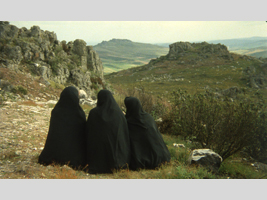
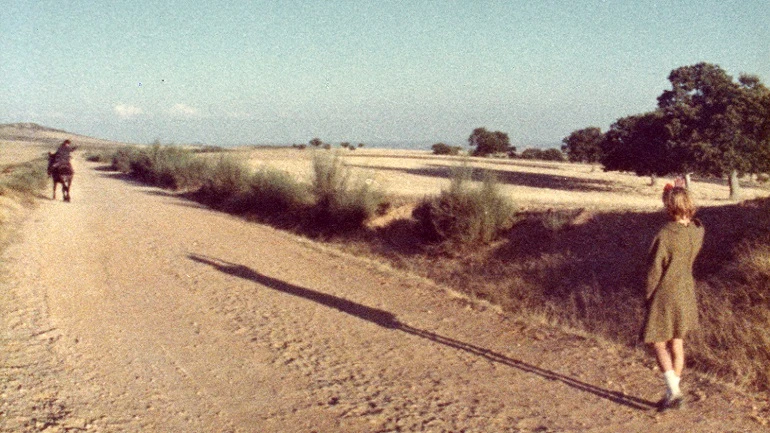
Held on 22, 24, 26, 29, 31 ene 2018
Margarida Cordeiro (1939) and António Reis (1927–1991) are two path-breaking figures in the Portuguese cinema that emerged in the wake of the rebellion of 24 April 1974. Their films, which operated outside the prevailing urban movements taking place, invented a filmic language that was at once poetic and hypnotic, a style and sensibility that would pave a long tradition of radical cinema in Portugal.
In Portugal António Reis is seen as a visionary, a master who had a major influence on the awakening of Portuguese cinema and a new generation of film-makers in the 1980s and 1990s, his poetry previously shining when Manoel de Oliveira invited him and Paulo Rocha to work on his first radical masterpiece, Rite of Spring (1962). The ethnographic and poetic cinema defined by Oliveira and Reis would later impact on the four works Reis directed with his wife, psychiatrist Margarida Cordeiro, which are screened in this series alongside Rite of Spring. The Museo Reina Sofía will, therefore, dig even deeper into the exploration of the auteur cinema that has shaped its programming in recent years, thus setting up continuities and relationships with the comprehensive retrospective on Straub and Huillet – huge admirers of these film-makers – held in 2016.
A large part of the revolutionary cinema in Portugal after Salazar’s dictatorship was markedly urban, yet Cordeiro and Reis emphatically went against the grain, moving away from urban landscapes towards the inland emigration that was distorting the country. With impoverished farm workers arriving in the capital every day after serving in the Colonial War or living in squalor in outlying villages, the film-makers deliberately wandered away from the city, working instead on the material and mythical structure of the remotest region depopulated by those leaving: Trás-os-Montes.
This unequivocal gesture was a provocation: the new democratic leaders had to understand the dialectic between aesthetic wealth and material poverty that determined the ways of life of the people they were representing. The film-makers set out to show how the symbols of the country’s poorest and most afflicted region, the most dispossessed, were those that had manifestly endured over time.
As with the revolutionary hindsight of Straub and Huillet, in Cordeiro and Reis there was a refusal to separate the nascent work from the one refusing to die, and they explored rural microcosms in a way that could be deemed anthropological, despite constituting a heterodox anthropology. In Reis’s words, “nobody can know what’s involved in making a film of this kind. It involves a body-to-body struggle between ancestral and ultramodern forms, between wolves and a Peugeot 504, between Neolithic ploughs and gas cylinders”.
The overlapping scenes form a kind of stratigraphy, with the shots cutting through successive layers of time in history, through everyday time. The work brings to mind the weaving of a mottled tapestry, assembling cloth from different ages, the sequences often operating around a feeling of touch – almost unique in the history of film — and a refinement in the symbolism of colour as an element which can create rhymes and distant relationships. The labyrinthine composition of Cordeiro and Reis’s films, which disorientated and fascinated contemporaries such as Jean Rouch, Joris Ivens and Jacques Rivette, does not abide by fantasies of reality, but rather adheres to the need to reproduce it in a profound, coherent order, “as though time never existed”, as Manoel de Oliveira put it.
This film series presents their work as a whole, described as brief and radical, poetic and popular, decisive and pivotal to the identity of contemporary Portuguese cinema by film-makers such as Pedro Costa, João Cesar Monteiro and João Pedro Rodrigues.
All screenings are in OV with Spanish subtitles.
Curatorship
Manuel Asín
Program
Documentos
Organised by
Museo Reina Sofía
In collaboration with

Más actividades
![Metahaven, The Sprawl: Propaganda about Propaganda [La diseminación: propaganda sobre propaganda], 2015, película](https://recursos.museoreinasofia.es/styles/small_landscape/public/Actividades/interfaz_emotiva_0.jpeg.webp)
EMOTIVE INTERFACE. The Films of Metahaven
Thursday, 27, Friday, 28, and Saturday, 29 November 2025 – check times
The Museo Reina Sofía and the Márgenes International Film Festival in Madrid, here in its fifteenth edition, present this series devoted to the artist collective Metahaven. The programme is framed inside the working strand both institutions started in 2024, focusing on an exploration of contemporary audiovisual narratives, a hybridisation of languages and the moving image as a tool for practising critical gazes on the present. Emotive Interface. The Films of Metahaven comprises two sessions of screenings and a masterclass delivered by the collective, centring on the relationship between the internet, technology, time and the moving image. All sessions will be presented by the artists.
The work of Metahaven — Dutch artist duo Vinca Kruk and Daniel Van der Velden — encompasses graphic art, video, installations, writing and design around urgent issues related to governance, identity, power and transparency in the digital age. Thus, their practice stands at the crossroads of art, film and critical thought, as they employ visual language as a tool to explore the tensions between technology, politics and perception, their practice combining the rigour of the visual essay and a strong poetic component, where graphic design, digital animation and documentary material fuse into dense, emotionally ambiguous compositions that speak of post-digital romanticism through an allegorical formulation. The spotlight of this series shines brightly on some of Metahaven’s recent works, for instance The Feeling Sonnets (Transitional Object) (2024), in which they examine language, poetry and digital time, and on The Sprawl (Propaganda About Propaganda) (2015), an essay which explores how the internet and social media have radically altered the relationship between truth, power and perception. Finally, the duo’s masterclass is set forth here as a survey of the main themes explored by both artists.
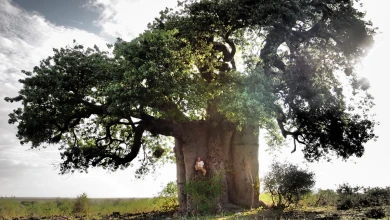
Francisco López and Barbara Ellison
Thursday, 11 December - 8pm
The third session in the series brings together two international reference points in sound art in one evening — two independent performances which converse through their proximity here. Barbara Ellison opens proceedings with a piece centred on the perceptively ambiguous and the ghostly, where voices, sounds and materials become spectral manifestations.
This is followed by Francisco López, an internationally renowned Spanish sound artist, who presents one of his radical immersions in deep listening, with his work an invitation to submerge oneself in sound matter as a transformative experience.
This double session sets forth an encounter between two artists who, from different perspectives, share the same search: to open ears to territories where sound becomes a poetic force and space of resistance.
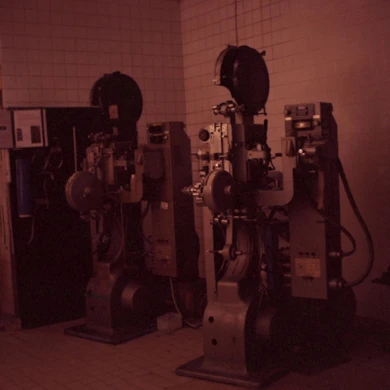
Long Live L’Abo! Celluloid and Activism
4, 5, 6 DIC 2025
L’Abominable is a collective film laboratory founded in La Courneuve (Paris, France) in 1996. It came into being in response to the disappearing infrastructures in artisan film-making and to provide artists and film-makers with a self-managed space from which to produce, develop and screen films in analogue formats such as Super 8, 16mm and 35mm. Anchored in this premise, the community promotes aesthetic and political experimentation in analogue film opposite digital hegemony. Over the years, L’Abominable, better known as L’Abo, has accompanied different generations of film-makers, upholding an international movement of independent film practices.
This third segment is structured in three sessions: a lecture on L’Abo given by Pilar Monsell and Camilo Restrepo; a session of short films in 16mm produced in L’Abo; and the feature-length film Une isle, une nuit, made by the Les Pirates des Lentillères collective.
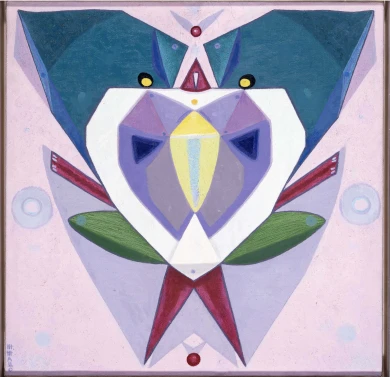
Estrella de Diego Lecture. Holding Your Brain While You Sleep
Wednesday, 3 December 2025 – 7pm
Framed inside the Museo Reina Sofía’s retrospective exhibition devoted to Maruja Mallo, this lecture delivered by Estrella de Diego draws attention to the impact of the artist’s return to Spain after her three-decade exile in Latin America.
Committed to values of progress and renewal in the Second Republic, Mallo was forced into exile to Argentina with the outbreak of the Civil War and would not go back to Spain to settle definitively until 1965 — a return that was, ultimately, a second exile.
Mallo saw out her prolific artistic trajectory with two impactful series: Moradores del vacío (Dwellers of the Void, 1968–1980) and Viajeros del éter (Ether Travelers, 1982), entering her most esoteric period in which she drew inspiration from her “levitational experiences” of crossing the Andes and sailing the Pacific. Her travels, both real and imaginary, became encounters with superhuman dimensions.
In parallel, her public persona gained traction as she became a popular figure and a key representative of the Generation of ‘27 — the other members of which also started returning to Spain.
This lecture is part of the Art and Exile series, which seeks to explore in greater depth one of the defining aspects of Maruja Mallo’s life and work: her experience of exile. An experience which for Mallo was twofold: the time she spent in the Americas and her complex return to Spain.
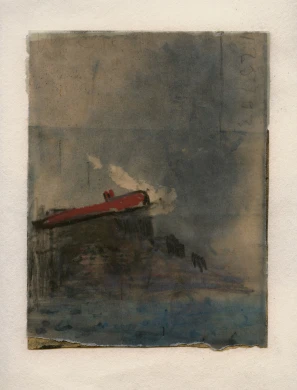
Juan Uslé. That Ship on the Mountain
Tuesday, 25 November 2025 – 7pm
Ángel Calvo Ulloa, curator of the exhibition Juan Uslé. That Ship on the Mountain, engages in conversation with artist Juan Uslé (Santander, 1954) in the Museo’s Auditorium 400 to explore in greater depth the exhibition discourse of this anthological show spanning four decades of Uslé’s artistic career.
The show casts light on the close relationship Uslé’s work bears to his life experiences, establishing connections between different stages and series which could ostensibly seem distant. Framed in this context, the conversation looks to explore the artist’s personal and professional journey: his memories, experiences of New York, his creative process, conception of painting, and ties with photography and film, and the cohesiveness and versatility that characterise his art. Key aspects for a more in-depth understanding of his artistic sphere.
The conversation, moreover, spotlights the preparatory research process that has given rise to this exhibition to grant a better understanding of the curatorial criteria and decisions that have guided its development.
These inaugural conversations, part of the main working strands of the Museo’s Public Programmes Area, aim to explore in greater depth the exhibition narratives of the shows organised by the Museo from the perspective of artists, curators and specialists.



![Miguel Brieva, ilustración de la novela infantil Manuela y los Cakirukos (Reservoir Books, 2022) [izquierda] y Cibeles no conduzcas, 2023 [derecha]. Cortesía del artista](https://recursos.museoreinasofia.es/styles/small_landscape/public/Actividades/ecologias_del_deseo_utopico.jpg.webp)
![Ángel Alonso, Charbon [Carbón], 1964. Museo Reina Sofía](https://recursos.museoreinasofia.es/styles/small_landscape/public/Actividades/perspectivas_ecoambientales.jpg.webp)